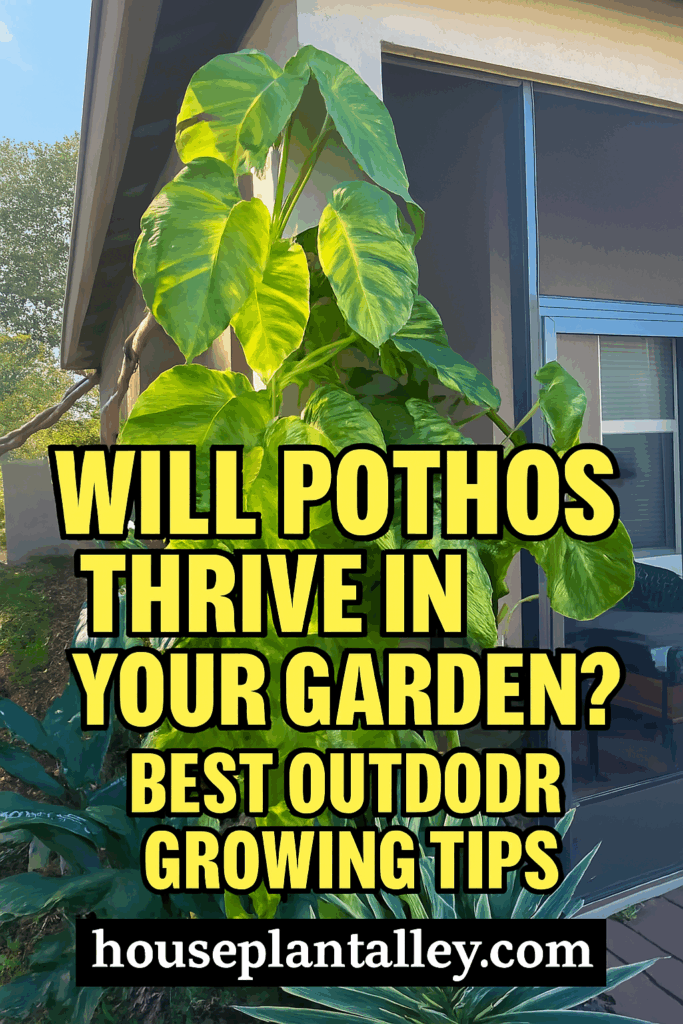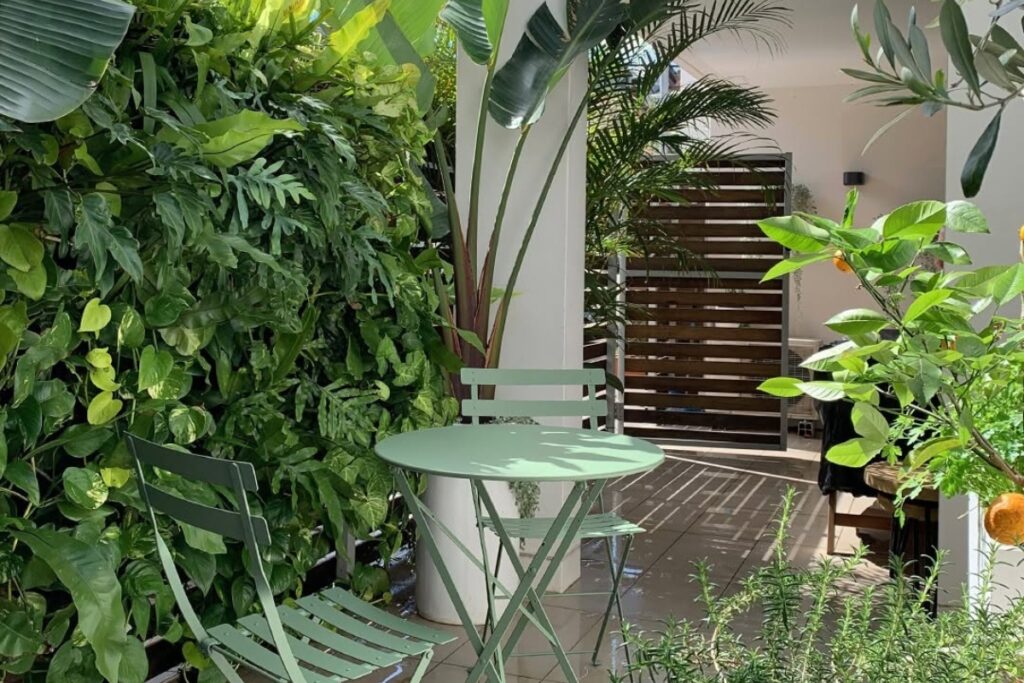You’ve probably admired your pothos as a houseplant, but it can flourish outdoors too – with the right approach. According to botanist Dr. Sarah Chen, “Pothos can transform into a vigorous garden climber, reaching heights of 40 feet in ideal conditions.” Your success depends heavily on your climate zone and growing strategy, though you’ll need to contemplate several essential factors before moving your pothos outside. Let’s explore how to make your garden the perfect outdoor home for this versatile vine.

Contents
Understanding Your Climate Zone for Pothos Success
When it comes to successfully growing pothos outdoors, your climate zone will make or break your gardening efforts. You’ll find the best climate compatibility in USDA zones 10-12, where pothos can thrive year-round as a perennial.
For zone differences below 10, you’ve got two options. You can either treat pothos as an annual that dies back in winter, or grow it in containers that you’ll need to bring indoors when temperatures drop below 45°F. “Pothos can reach impressive sizes outdoors in the right climate,” notes botanist Dr. Sarah Chen, “but protecting them from frost is essential for survival.”
Essential Outdoor Growing Requirements
Although pothos can adapt to various conditions, they need specific requirements to truly flourish outdoors. You’ll want to focus on two key factors: soil drainage and sunlight exposure. Plant your pothos in well-draining, sandy soil that won’t trap water around the roots. As for light, choose a spot with dappled shade or partial sun – direct sunlight can scorch the leaves.
Monitor the temperature closely, as these tropical plants won’t survive prolonged exposure below 45°F. If you’re in zones 4-9, treat them as annuals or keep them in pots that you can move indoors when temperatures drop.
Managing Potential Invasiveness in Your Garden

Before planting pothos outdoors, you’ll need to research your local regulations since this vigorous vine can become invasive in certain regions. When garden planning, consider containing your pothos in raised beds or containers to prevent unwanted spread.
In zones 10-12, where pothos thrives year-round, it’s important to monitor its growth carefully. The vine can quickly overtake native species, climbing up to 60 feet and producing leaves reaching 30 inches wide. If you’re concerned about invasiveness, try these alternatives:
- Plant in hanging baskets
- Use decorative containers with proper drainage
- Create barriers around in-ground plantings
- Maintain regular pruning schedules
Best Practices for Year-Round Pothos Care
Successful year-round pothos care requires different strategies as the seasons change. During spring and summer, focus on pest management by inspecting leaves weekly and treating any issues with neem oil. Your seasonal pruning schedule should align with growth patterns – trim aggressively in early spring and lightly in mid-summer.
When temperatures drop below 50°F, move outdoor pothos inside or protect them with frost blankets. For year-round success, maintain consistent soil moisture, fertilize monthly during growing season, and adjust light exposure based on leaf appearance. In zones 4-9, treat pothos as annuals or bring containers indoors before first frost.
